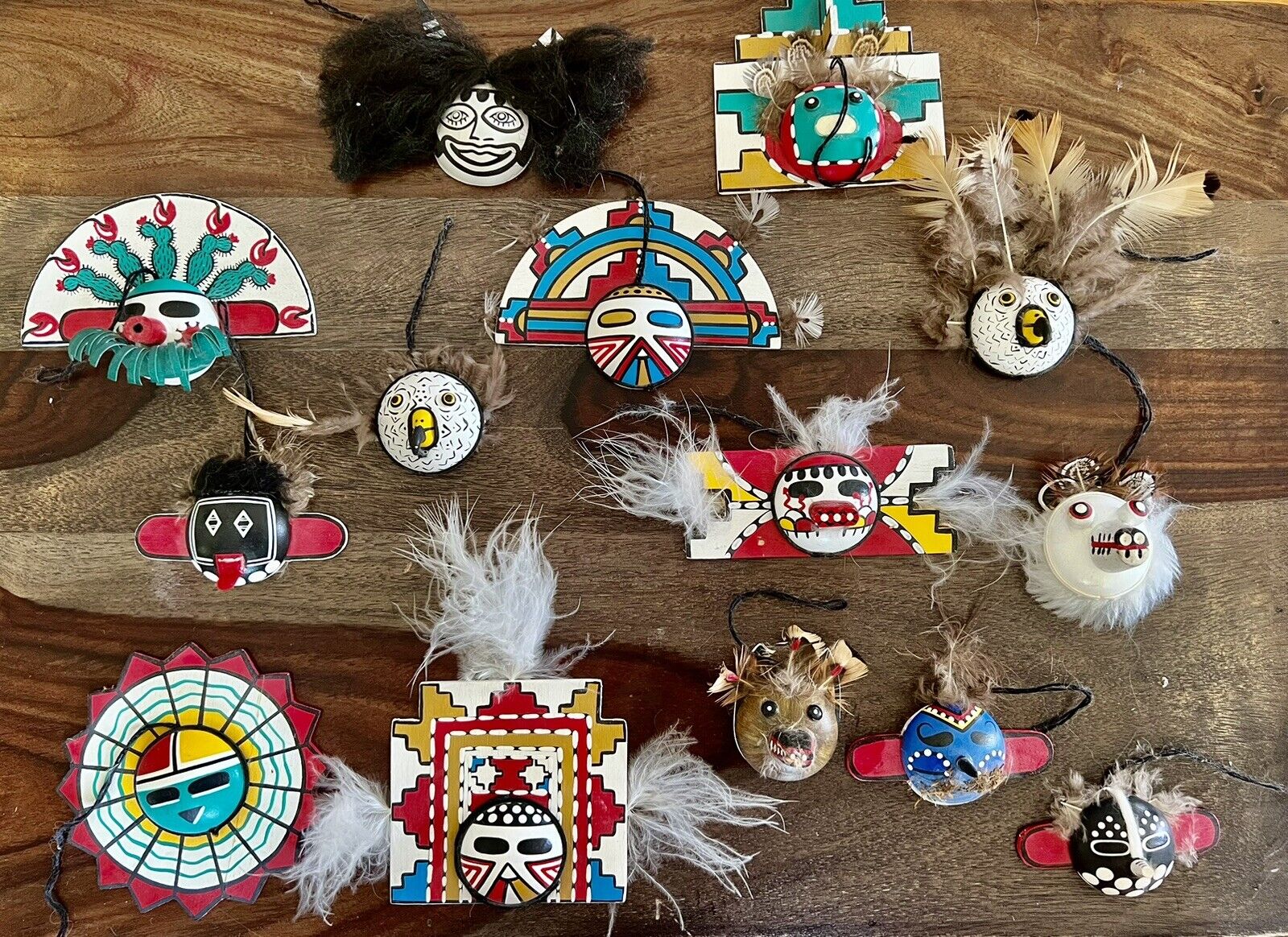-40%
Wabanaki woman doll,peak cap traditional dress c/1700-1850 - Paul St John-Mohawk
$ 110.88
- Description
- Size Guide
Description
A larger traditionally dressed Wabanaki woman doll made by Paul St John, Mohawk craftsman. This doll's body is made of soft tanned deer leather and she wears a traditional beaded peaked cap, skirtand leggings. She is carrying a birch bark tray, has a beaded shoulder bag, a braided yarn
belt
of red and yellow wool and leather deer moccasins, same leather as doll's body.
This doll is 18" tall from her moccasins to the top of her peaked cap, 15.5" from top of her head to moccasins. She is about 7" across at her slightly outstretched upper arms and about 2.75" "deep".
Her peaked cap and leggings are of vintage dark red wool with black silk binding and a vintage white seed bead border on the outer edges. The peaked cap has 2 beaded designs on each side, these are a double curve based design ... Double curves are traditional design motifs for the Wabanaki (
Wabanaki Confederacy, 5 Northeast tribes in Maine, Vermont & Eastern Canada - the Abenaki, MicMac (Mi'kmaq is Canadian spelling), Maliseet, Penobscot and Passamaquoddy.)
The peaked cap
was worn by Wabanaki women from the early 1700's-1850's and some peaked caps were worn by Wabanaki women in photos as late as 1900. This doll's skirt is of black vintage wool and has at the bottom an inner border of white vintage seed beads and a red silk ribbon for the outermost border/binding. The same design as the peaked cap appears on the skirt's front mid-bottom and above these are 3 of the "trade silver" brooches. Bottom of the skirt and the back of the leggings have a different beaded double curve design, this one with a trifoliate design at the center of the double curves. The shoulder bag is of red wool and has a flap to close over the top. The bag has an outer border of white seed beads with those around a metallic bead "closure". The bag's shoulder strap is of red wool with white bead "3 in a row" design along the entire strap. It is bound with a black silk ribbon. The doll's tunic shirt is of calico cotton in a vintage paisley design. The skirt and leggings are tied on with strips of even softer and darker tanned leather which is the traditional way.
Her jewelry consists of 3 beaded necklaces, a beaded bracelet and metal turtle earrings and "trade silver" washer brooches . The necklaces and bracelet are of vintage white glass seed beads. One of the necklaces has a turtle pendant to match her earrings. Another necklace is a choker style. The "trade silver" brooches are all the same; 5/8" diameter with some embossed "stamping".
She holds a birch bark tray - like those made for hundreds of years by the Wabanaki and are still made today by some Wabanaki craftspeople.
Her moccasins are deer leather in a style with large cuffs - woodland style.
2nd to last photo is slideshow above is of
Christina Paul, Mi'kmaq (1804-1886). She is wearing Victorian dress - and an intricately Wabanaki beaded peaked cap. She was a famous porcupine quill worker, one of her pieces is on a table beside her. Last photo is of Paul St John with 2 of his other creations.
This larger doll has been m
eticulously crafted
by
Paul St. John,
Mohawk craftsman.
Not only is this doll visually correct for the era, the very materials Paul uses are traditional and accurate. The doll is made of soft tanned white deer leather,
it is from the Pleasant Point Maine Passamaquoddy reservation. (Sipayik).
Paul has made dolls for several museum exhibits and permanent displays including the Mohawk, the Passamaquoddy, the Maliseet, the MicMac museums & the NH Mt Kearsarge Museum, ... You would be accurate in describing this as a "museum quality" doll. Each doll Paul makes is unique.
Paul makes his dolls dressed in traditional attire for different occasions from quite formal to everyday clothing.
This is a "no face" doll -
Several NE Native American tribes made "no face dolls" and there are stories and legends about why the dolls have no face.
One story is that the Creator and the child together should determine the “personality” of the doll. Another story is that if a face is painted on the doll, the child will begin to identify too closely with the doll’s personality and a pretty face may cause conceit or self-pride. Yet another is that the dolls were so beautifully made, and given
beautiful clothing that when someone added a beautiful face, the doll it
self became vain.
Please view all the slideshow photos to see the detailed work on this doll. Last photo is of Paul St John with examples of his other works.
Paul St. John lives in Maine, his mother is Passamaquoddy, Maliseet & MicMac. He grew up on the Mohawk lands in New York, his father's homeland and is enrolled in the Mohawk tribe.. - When I saw his work I knew immediately I needed to offer his great porcupine quill decorated sweetgrass baskets and many other crafts. He also makes quilled/beaded moccasins, barrettes, quill & sweetgrass baskets, birch bark boxes, rattles and many other items.
Watch this store for more of his pieces. Can't wait to see what he is going to create next.



















